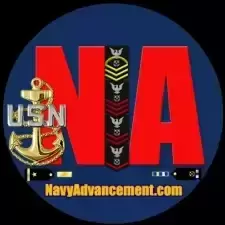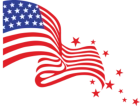-
Posts
9,985 -
Joined
-
Last visited
-
Days Won
106
Everything posted by Tony
-
Troops are already staring to get paid you little Weasel. Aren't you, as speaker of the house, supposed to motivate & unite? The move is most likely illegal but the Democrats want servicemembers to get paid. They also don't want Federal workers to get fired and to get paid... House Speaker Mike Johnson (R-La.) dared Democrats on Tuesday to challenge President Trump’s administration move to repurpose previously appropriated funds to pay service members during the government shutdown. “If the Democrats want to go to court and challenge troops being paid, bring it. OK,” Johnson said during a press conference at the Capitol.
-
This is getting sick people... In late January, Lt. Gen. Joe Berger, who had taken the top posting in July 2024, was asked for his advice about the legality of using Texas National Guard soldiers for immigration enforcement. Berger told Army chief of staff Gen. Randy George that he was skeptical and wanted more information about whether the soldiers were properly trained for that kind of mission, according to a former senior defense official and another person familiar with his actions. He was told by the department’s acting general counsel, Charlie Young, to stop meddling in state affairs, the sources said.
-
This is crazy and disgusting. I also believe this is the direction the Republican party is going... Dwyer responded: “1488.” That figure is a form of shorthand among white supremacists when making reference to their beliefs. It refers to the 14 words of text in the slogan, “We must secure the existence of our people and a future for white children.” The “88” stands for “Heil Hitler,” with the H marking the eighth letter of the alphabet.
-
The strike is the most recent example of Trump's efforts to use U.S. military power in new, and often legally contentious, ways, from deploying active-duty U.S. troops in Los Angeles to carrying out counter-terrorism strikes against drug trafficking suspects.
-
Thomas Jefferson, no fan of the press himself, once wrote that our liberty depends on the freedom of the press, "and that cannot be limited without being lost." He knew a free and fair press is an essential safeguard to a functioning democracy... When we flew by helicopter to bring David and Zabi's bodies to a nearby American base, the U.S. general there ordered an honor cordon, a tribute that is usually reserved for fallen troops, not civilians from the United States and Afghanistan. Out of respect for two people who'd lost their lives in their line of duty, doing their jobs documenting the truth as journalists, U.S. soldiers lined up in the darkness on either side as David and Zabi were carried off the helicopter. I fought hard not to weep at one of the most decent, humane, and heartfelt gestures I've ever seen.
-
Thanks to that commander-in-chief's tariff war that he created. trump should have anticipated this, that big dummy... Beijing will not allow the export of rare earth materials for use by foreign militaries, China’s Ministry of Commerce announced on Oct. 9. These are the first restrictions imposed by China that specifically target the defense sector, according to Gracelin Baskaran, a critical minerals expert at the Center for Strategic and International Studies.
-
News organizations including The New York Times, The Associated Press and the conservative Newsmax television network said Monday they will not sign a Defense Department document about its new press rules, making it likely the Trump administration will evict their reporters from the Pentagon. Those outlets say the policy threatens to punish them for routine news gathering protected by the First Amendment. The Washington Post, The Atlantic and Reuters on Monday also publicly joined the group that says it will not be signing.
-
Many military families were struggling financially even before the shutdown, said Daniela Hines with Blue Star Families of America. "The younger generation of military families have less than $3,000 in savings and that comprises one-third of military families. So all of this financial instability is really impactful for them and causing a lot of angst," she said. Thank you trump...
-
US military veterans increasingly face arrest and injury amid protests over Donald Trump’s deportation campaign and his push to deploy national guard members to an ever-widening number of American cities. The Guardian has identified eight instances where military veterans have been prosecuted or sought damages after being detained by federal agents. The latest incident occurred in Broadview, outside Chicago, where 70-year old air force veteran Dana Briggs was charged with felony assault on a federal officer on 29 September.
-
With 2025 coming to a close in a couple months and the fiscal year just starting–despite a government shutdown– the United States Navy is once again pressed with the question of reevaluating its fleet. Each year, the Navy decides which ships are ready for retirement and which will continue to be part of the fleet. The Navy also adds new ships as a means to introduce new tech and replace the older vessels being retired or sold off
-
Let's remember the federal workers that will not get paid... WASHINGTON — The Department of Defense plans to siphon $8 billion in leftover fiscal 2025 research and development funding to ensure troops get a paycheck during the ongoing government shutdown, a department official said in a statement on Saturday.
-
Fingers crossed... House Minority Leader Hakeem Jeffries (D-N.Y.) said Thursday that he would support a stand-alone bill to pay military personnel amid the shutdown. Speaking to reporters outside the Capitol, Jeffries urged House Speaker Mike Johnson (R-La.), who has canceled all House votes since Sept. 29, to call lawmakers back to Washington so they can ensure the troops are paid on schedule.
-
Meanwhile, as the government shutdown that could cause the lapse in pay persists, the Defense Finance and Accounting Service has clarified it needs two days’ worth of lead time to process military pay. That means Congress must act Monday or earlier in order to avoid a delay getting troops their checks. “If authority to pay is received by October 13, the military will be paid on time on October 15,” DFAS spokesperson Steve Burghardt said Friday. “If authority to pay is received after October 13, the military will be paid within two business days.”
-
A Navy wife and a veteran herself, Bailey was already making plans to not receive their paycheck on Wednesday, a fear that was threatening to become such a political liability that President Donald Trump on Saturday ordered the Defense Department to find other funds to ensure military pay continues next week.
-
Good time to contact your elected official... Thune and Johnson signaled that President Donald Trump’s White House may shift money around to pay troops. Still, their decision to pass up a vote on military pay — if they stick to it — is a risk for Republican leaders, who are facing rank-and-file pressure to ease the burden of the shutdown on US service members.
-
WASHINGTON (AP) — President Donald Trump said Saturday that he has directed the Defense Department to use “all available funds” to ensure U.S. troops are paid Wednesday despite the government shutdown. Trump said in a social media post that he was acting because “our Brave Troops will miss the paychecks they are rightfully due on October 15th.” No, he is doing this because it has become a political liability, he could care less about anyone's paycheck, just ask those who were let go by doge and those federal workers that he has said he is going to fire during this shutdown...
-
As he begins firing federal workers, as a tactic to get at politicians to act to his liking... The trump administration has, for now, ruled out Congress enacting a short-term fix to pay members of the military who risk going without a paycheck next week and is instead looking at other ways to address the issue.


